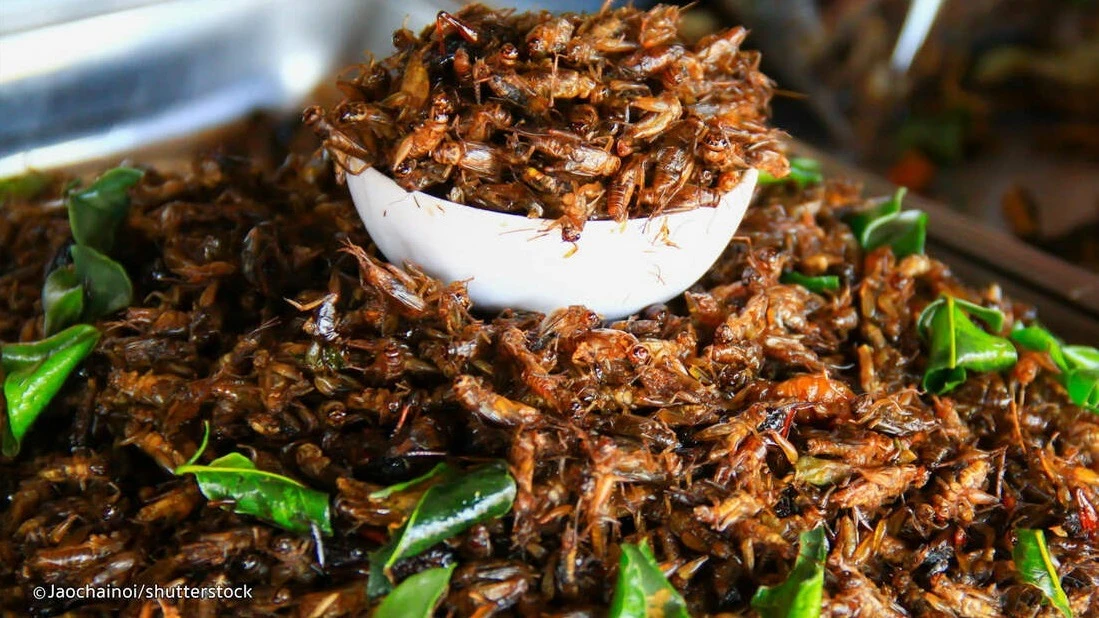Nutritional value, health benefits of edible insects

TANZANIA is endowed with a variety of insect species present in our neighbourhood and everywhere we go. But because insects are small, we tend to underestimate their nutritional value and health benefits while they are comparable with animal source-foodstuffs.
It is also the case with pelagic fish (dagaa), thinking because they are small in size they are for feeding poultry and only people who cannot afford a decent meal can eat them. Although often underestimated, studies show dagaa has high protein and lipid content and is rich in iron (8.18-10.91mg/100g), zinc (4.07-10.25mg/100g) and calcium (1556.4-1866.5 mg/100g), according to a study conducted by Kabahenda et al (2011). So, both insects and dagaa, small as they are, shouldn't be underestimated.
Another researcher, Lilian Ibengwe (2010), who conducted a study in Lake Victoria, says dagaa “is rich in essential nutrients, in high quality protein with high digestibility and made of 10 essential amino acids in desirable quantities for human consumption, essential omega-3 fatty acids, vitamins A, B, D and a variety of minerals such as calcium, potassium, phosphorus, iron, copper and iodine required for supplementing both infant and adult diets.” So, the size of animal-source food doesn’t matter, but the nutritional value and health benefits the food has matter most.
Thus, edible insects have high nutritional value and health benefits comparable with animal-source foodstuffs. In some countries edible insects like caterpillars have the status of a special meal for family visitors. “Insects are rich in micronutrients (vitamins and minerals) and are cheap to produce. Farming them is more environmentally friendly than farming other animal-source foods,” according to Mainland Tanzania Food-Based Dietary Guidelines for a Healthy Population (TBDGs, 2023)
These guidelines were developed by the Ministry of Health, through Tanzania Food and Nutrition Centre (TFNC) and Food and Agriculture Organisation of the United Nations (FAO). They are instrumental in supporting food and nutrition information and educational activities in the country.
According to TBDGs, fish, poultry, and insects are “the healthiest options among animal source foods due to their healthy fatty acids and oils. They are associated with a reduced risk of cardiovascular diseases and stroke.” The guidelines suggest that edible insects are among the animal food-source foods rich in proteins, have a complete profile of amino acids, thus providing the body with higher quality protein than the plant-based proteins found in pulses, nuts, and seeds. Therefore, where malnutrition is a problem edible insects can serve as an animal-source food.
Edible insects are also a good source of iron, zinc, and vitamins A and B, which are essential for human growth and development. Not only that, edible insects “help build the framework (collagen) of bones and teeth, tendons and ligaments, and blood vessels.”
Citing studies conducted by Hlongwane, Slotow and Munyai (2020) and Oibiokpa et al. (2018), TBDGs say that “insects are good sources of complete protein and high levels of vitamin B12, iron, zinc, fibre, essential amino acids, omega-3 and omega-6 fatty acids, and antioxidants. By weight, insects contain higher amounts of protein than traditional sources of protein such as meat, dairy products and seeds.”
Furthermore, TBDGs say edible insects contain between 12 grams and 77 grams of protein per 100 grams, while fish, chicken and beef contain between 13 grams and 31 grams of protein. Their protein digestibility ranges from 76-98 per cent.
Citing a study conducted by Rumpold and Schluter (2013), TBDGs suggest that in insects such as crickets, grasshoppers and mealworms, micronutrients like copper, zinc, manganese, magnesium and calcium are more readily available for absorption than the same nutrients found in beef. “Some insects, like crickets, contain more omega-6 and omega-3 than beef. Insects also contain comparatively high amounts of iron, zinc, manganese, selenium and phosphorus.”
Other studies conducted by Hlongwane, Slotow and Munyai (2020) and Bukkens (1997) suggest that grasshoppers provide 12-73 grams of protein per 100 grams, while winged termites (kumbikumbi) provide 32–37 grams per 100 grams.
Shah et al. (2022) in their paper titled “Nutritional composition of various insects and potential uses as alternative protein sources in animal diets” suggest that so far about 2,000 species of edible insects have been recognised. They say that the edible insects’ protein content ranges from 350 to 700 g/kg of [dry matter], and their protein quality is “considered outstanding, as shown by rich [amino acid] profiles and digestive properties.” Dry matter is the solid part of food that remains after water is removed (the part of food which is not water).
Van Huis et al. (2021) in their paper titled “Nutritional Qualities and Enhancement of Edible Insects” suggest that the protein content of edible insects amounts to between 35.3 per cent dry matter for winged termites, and 61.3 per cent dry matter for crickets, grasshoppers, and locusts.
It suffices to say that edible insects, although not used by many people, can contribute to food security, especially in areas in which there is food scarcity. Their nutritional value and health benefits shouldn’t be underestimated. Thus, public awareness is needed to ensure people know which insects are recommended for consumption to improve public diet and health.
Top Headlines
© 2025 IPPMEDIA.COM. ALL RIGHTS RESERVED

























